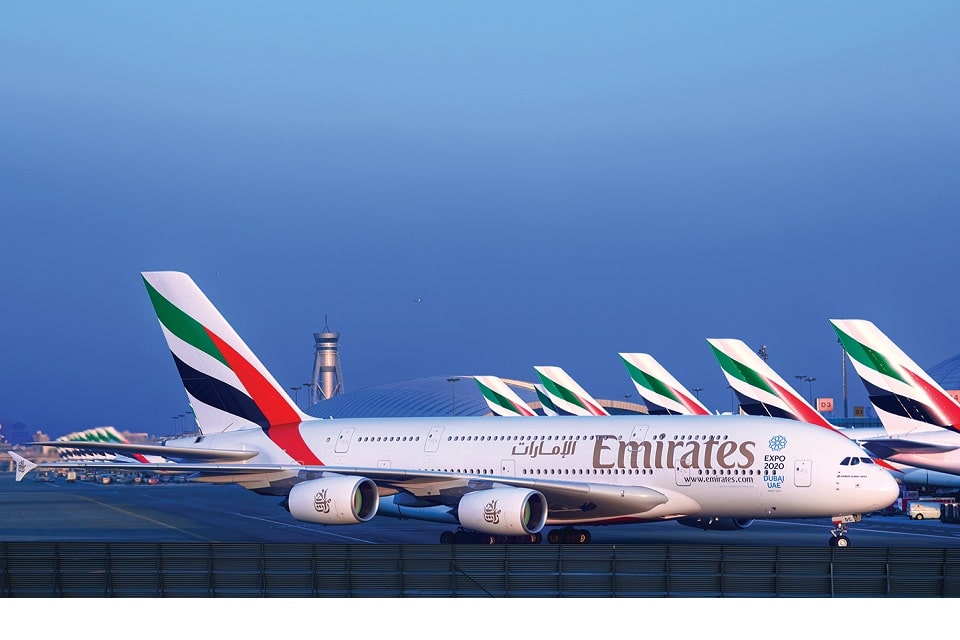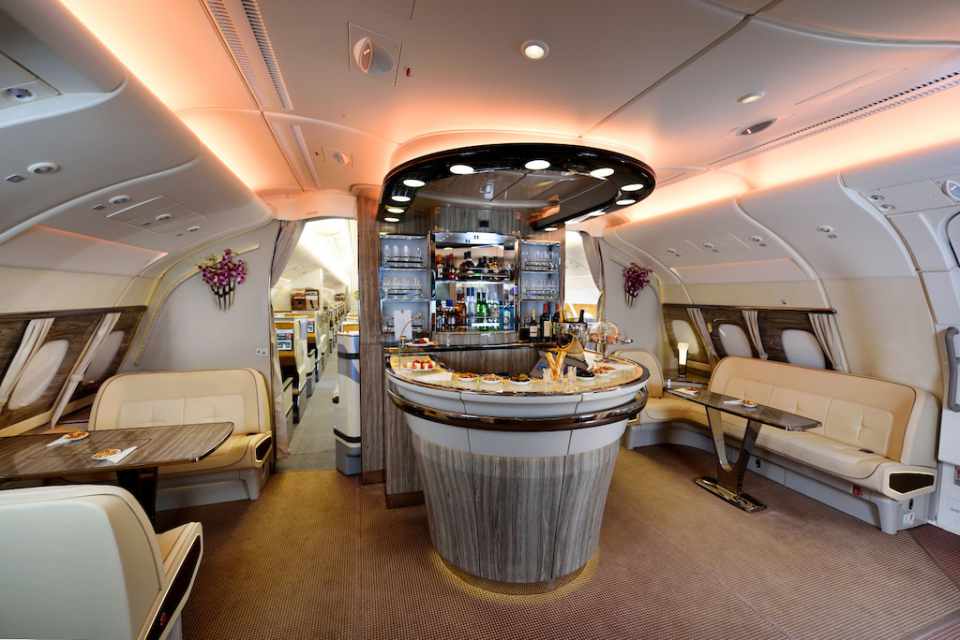Aerospace
Emirates is unhappy after abruptly cancelling a flight at LHR airport.

constantly and collectively to protect our flight operations and ensure minimal customer disturbance, especially during high travel months
It is consequently deeply sad that LHR offered us 36 hours to comply with capacity cuts last evening, a figure that appears to have been snatched from thin air. Their letters not only specified which planes we should reject paying customers, but also threatened legal action if we did not comply.
These requests are completely ridiculous and unacceptable, and we reject them.
Our ground handling and catering operations at London Heathrow Airport (LHR) are managed by dnata. Emirates Group – are well prepared and competent of handling our flights. As a result, the crux of the problem is with the airport operator’s central services and systems.
Emirates is an important and consistent operator at LHR, having reintroduced six daily A380 flights beginning in October 2021. Our operating requirements cannot be a surprise to the airport after 10 months of consistently high seat loads.
They now want to force Emirates to reject tickets to tens of thousands of passengers who have paid for and booked months in advance their long-awaited package holidays or flights to see their loved ones. And this at the peak season with the forthcoming UK holidays, when many people are keen to travel following two years of pandemic restrictions.
Emirates is committed to doing the right thing for our customers. However, with all flights running full for the next few weeks, including at other London airports and on other airlines, re-booking the large number of possibly impacted passengers is unfeasible. To complicate matters further, 70% of our LHR customers are travelling beyond Dubai to see loved ones in far-flung destinations, and it will be tough to locate them new onward connections at short notice.
It is also unrealistic to move some of our passenger operations to other UK airports at such short notice. It is not as straightforward as locating a parking spot at a mall to ensure ground readiness for a widebody long-haul aircraft with 500 passengers on board.
The final truth is that the LHR management team is unconcerned about travellers and airline customers. All of the signs pointed to a robust travel comeback, and Emirates has been loud about it for months. We planned ahead of time to be ready to service customers and meet travel demand, including rehiring and training 1,000 A380 pilots in the previous year.
LHR decided not to act, plan, or invest. Faced with a “airmageddon” situation as a result of government incompetence and inaction, they are shifting the entire weight – of costs and the hurry to sort out the issue – to airlines and passengers.
The decisions of the London Heathrow management team should be scrutinised by the airport’s shareholders.
Given the enormous value that the aviation community generates for the UK economy and communities, we applaud the action taken by the UK Department for Transport and Civil Aviation Authority to request information from LHR on their response plans, system resilience, and the seemingly arbitrary cap of 100,000 daily passengers. Given that LHR handled 80.9 million passengers in 2019, or a daily average of 219,000, the cap represents a more than 50% reduction at a time when LHR claims to have 70% of ground handling resources in place.
Emirates intends to continue operating to and from LHR as usual till further notice.

Aerospace
Which is bigger 777x or 787 aircraft ?

The 777X is a new series of the Boeing 777 family and is designed to be larger and more efficient than its predecessor. It features two variants: the 777-8 and the 777-9, being the larger of the two.
The Boeing 777X emerges as the larger sibling within the Boeing family, representing a significant leap forward in both size and efficiency. Comprising two variants, the 777-8 and the 777-9, the latter takes the crown as the larger of the two. With its expansive fuselage and impressive wingspan, the 777X is tailored for long-range journeys and boasts a substantial passenger capacity.
On the other hand, the Boeing 787, affectionately known as the Dreamliner, occupies a niche in the market as a smaller yet formidable aircraft designed for medium to long-range flights. Its distinguishing feature lies in its composite fuselage, a technological marvel that renders it lighter and more fuel-efficient compared to conventional aluminum counterparts. The Boeing 777X is larger than the Boeing 787 aircraft.
When it comes to passenger capacity, the 777-9 reigns supreme, typically accommodating a sizeable contingent of 400-425 passengers in its standard configuration. In contrast, the 787, with its more modest dimensions, typically carries between 240-290 passengers, depending on the variant and layout.
One of the remarkable innovations introduced with the 777X is its folding wingtips, a feature designed to address the logistical challenges of accommodating such a large aircraft in conventional airport gates. These folding wingtips enable the 777X to retract its wings, allowing it to fit into gates designed for smaller aircraft while still reaping the benefits of an extended wingspan during flight, thereby enhancing fuel efficiency and operational flexibility
Aerospace
China Secures Production Certificate for Mass Production of Pilotless eVTOL Aircraft

The first passenger-carrying pilotless electric vertical takeoff and landing (eVTOL) aircraft in the world, the EH216-S, has received the Production Certificate for its eVTOL aircraft from the Civil Aviation Administration of China (CAAC).
This is a significant milestone for EHang Holdings Limited, the leading UAM technology platform company in the world. This outstanding accomplishment is another big step towards mass manufacturing for the eVTOL aircraft and the ensuing commercial operations, building on the ground-breaking acquisition of the Type Certificate and the Standard Airworthiness Certificate for the EH216-S.
The PC is a crucial certificate that the aircraft maker receives from the CAAC, the country’s aviation authority. By obtaining this certificate, EHang has demonstrated that it has set up a quality management system for mass production that satisfies the airworthiness regulation standards set forth by the CAAC, and the company has been given permission to continue producing mass quantities.
It is also a strong guarantee of the calibre of the goods made by EHang. Raw materials, supplier management, manufacturing organisation, production quality control, aircraft pre-delivery test, after-sales repair and maintenance, etc. are all included in the mass production quality management system for the EH216-S.
To ensure that every aircraft and its components that roll off the production line strictly adhere to the approved type design and safety requirements, the system sets clear guidelines and documentation for every step in the production procedure. This ensures comprehensive traceability and safety control.
Aerospace
Four Airbus A380 Superjumbos lined up to be scrapped

In a strategic move aimed at reclaiming valuable resources from the iconic Airbus A380 aircraft, VAS Aero Services and Dr. Peters Group have announced a significant collaboration.
This partnership marks a milestone in aviation logistics and aftermarket services, with four of these colossal planes slated for teardown and redistribution of used serviceable material (USM).
The venture between VAS Aero Services, renowned for its expertise in aircraft dismantlement, and Dr. Peters Group, a prominent Germany-based investment fund management firm, underscores a commitment to sustainable aviation practices. This isn’t their first foray into scrapping A380s; their successful partnership has already seen the dismantlement of these aircraft, making them pioneers in this niche.
Under the agreement, the latest consignment brings the tally to eight A380s entrusted to VAS by Dr. Peters Group. Managing Director Christian Mailly of Dr. Peters Group emphasized the trust placed in VAS, citing their unparalleled capabilities in dismantlement and aftermarket sales network. It’s a strategic move in response to the growing demand for quality USM parts, particularly with the resurgence in reliance on the A380.
Notably, the teardown process will be carried out at various locations, optimizing the positioning of harvested parts to cater to different markets. While some parts will be positioned in Europe to support operators in the region and the Middle East, others will remain in the Asia-Pacific region. This meticulous strategy ensures efficient access to spare parts, benefiting MROs and airlines across these markets.
The decision to retire these A380s comes at a time when operators are reassessing fleet strategies amidst evolving market dynamics. Despite initial plans for quick retirement due to the emergence of more fuel-efficient alternatives, factors such as a rebound in long-haul demand and delays in new widebody deliveries have prompted operators to reconsider. The A380, with its unique capacity and capabilities, presents a practical solution for short-term capacity management.




























